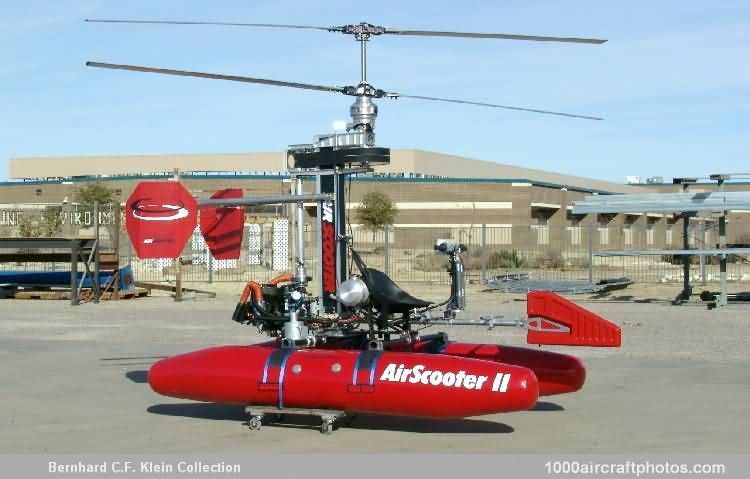The design was created on the basis of simplicity and ease of flying, and in structural terms is centered on a sturdy but very light torque-box airframe built of composite materials, supported on the ground or water by a pair of floats, and carried in the air by a contra-rotating pair of two-blade co-axial rotors. The elimination of the complexities associated with an orthodox rotor system (swash plates, collective control and cyclic control) has resulted in several benefits, including the elimination of all need for an anti-torque tail rotor.
Most importantly, perhaps, is the creation of an intuitive flight control capability by the employment of simple motorcycle-style handlebars: the pilot merely opens or closes the throttle to climb or descend, turn the handlebars left or right to yaw the helicopter by means of the rudders on the short booms extending to the rear of the rotor mast, and move the handlebars for forward or backward movement.
Thus there is no need for pedals. The pilot sits ahead of the rotor mast, with the specially designed 65 hp AeroTwin AT972 air-cooled two-cylinder four-stroke in-line engine engine to the mast's rear. The engine drives the rotor assembly by means of a belt, and draws its fuel from a triangular 5 gal (18.9 l) tank mounted to the right of the pilot. The capacity provides a flight endurance of about two hours.
The AirScooter II first flew in 2004, and early in 2010 efforts remained underway to finance continued development and bring the type to market under FAA Part 103 regulations for a lightplane that can be flown by an unlicensed pilot. The manufacturer has also proposed the further development of the AirScooter as a UAV for the reconnaissance role."
